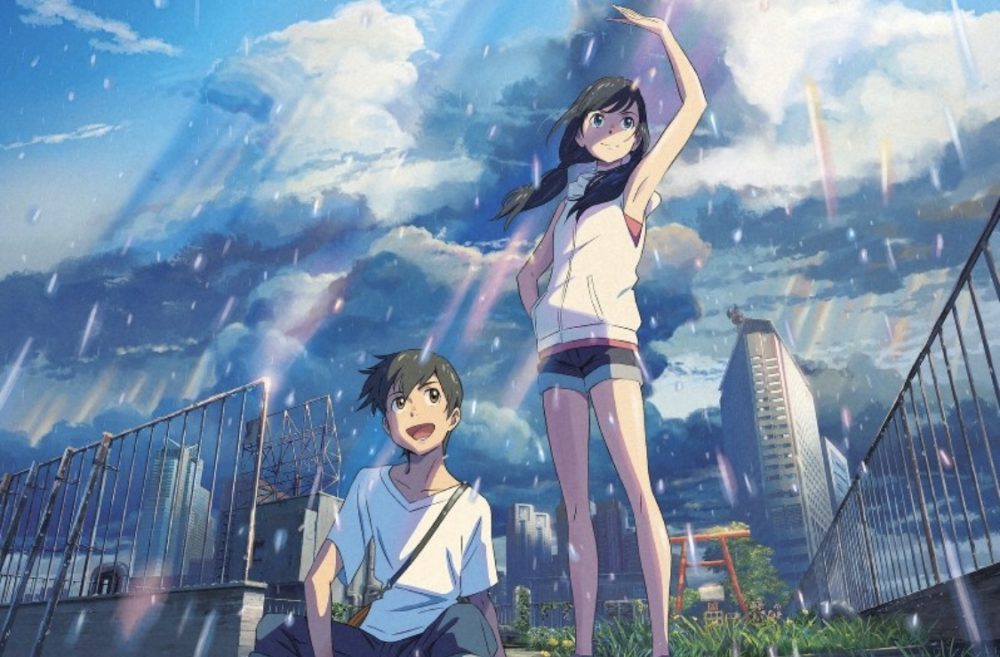
By Jennifer Trend, Lifestyle Editor
“Tenki No Ko,” also known as “Weathering With You” in English, is a Japanese film that was released July 19 in Japan. It follows the release of “Kimi No Na Wa,” or “Your Name” in English, which was released less than three years ago. “Tenki No Ko” has already surpassed “Kimi No Na Wa” in the box office within the first week of its release.
Summary:
Hodaka Morishima, a sixteen year old boy, moves to Tokyo but quickly becomes broke with no one or home to turn to. After a girl shows him kindness by giving him a meal, he saves her from an attempted assault by two men. The two become friends and Hodaka realizes something: that the girl, Hina Amano, has the power to stop the endless rain in Tokyo with her prayers but the weather wants what it gave to Hina back and add that to the trouble Hodaka, Hina and her younger brother, Nagisa are in adds for a very interesting story.
Thoughts:
Going into the movie, I let myself think that this film would be similar to “Kimi No Na Wa,” and therefore had high expectations— which was unfair, because it would be hard to reach and surpass the bar that I had set after watching “Kimi No Na Wa”. So I won’t lie when I say that the first half left me a little disappointed. But after realizing that this wasn’t going to be the next “Kimi No Na Wa” but rather the first “Tenki No Ko,” I saw the movie in a whole new light, and boy, do I love it.
Even though it was in Japanese, I was able to understand a good 85% of what was going on, even during scenes where I had no clue what anyone was saying (though I do admit that the first bit was hard to catch on as there was a constant stream on words that I didn’t recognize). You don’t exactly need to fully know Japanese to understand what’s going on because you can see almost everything in the characters emotions and in the setting, which I believe can be universally understood. But if you don’t know any Japanese, don’t worry— an English sub is projected to be available in America in early 2020.
The story was something that I think everyone can draw a little inspiration from. It’s something that we can relate to, while introducing a fantastical plot. I found myself laughing or gasping in disbelief at what was happening. The themes in the movie were almost soul reaching—how you can’t take something without giving back, the idea that there has to be balance in the world and how no one is exempt from punishment for their actions.
The only thing that I didn’t necessarily enjoy was the fact that the plot was not introduced until two thirds into the movie. There were small conflicts and plots in the beginning to keep the story moving, but there was no real conflict or plot that created an emotional reaction until the kids were on the run, which was a decent amount into the movie.
Music & Cinematography
Just like “Kimi No Na Wa,” the title track was again done by RADWIMPS, and needless to say, it was beautiful. It’s called “Ai Ni Dekiru Koto Wa Mada Aru Kai” or “Is There Still Anything That Love Can Do?” in English. Another prevalent song is “Grand Escape” featuring Toko Miura with RADWIMPS. As expected, these songs were emotionally striking when paired with the movie, and did wonders to make me feel as if what was happening to Hodaka or any of the characters was amplified into my soul.
The visuals of the film were also astounding. From the landscape to the weather to even the food, no little detail was left out. Everything looked so real yet so unreal, that I can only begin to describe it as breathtaking. The stills of the weather or city that appeared for dramatic effect were also breathtaking but also had such a peaceful and calming tone to it.
Warnings:
In the movie, there were some dark turns that took me by surprise. Not in a bad way, but rather, I-didn’t-think-that-something-like-this-could-occur. To give some context, Hodaka pointed a gun at someone twice in the movie, and then shot it, but thankfully not hitting anyone but rather at an inanimate object. The violence was prominent, as Hodaka was carrying some sort of injury throughout the movie, and one of the ending scenes was a slightly more detailed fight scene than I was expecting.
There also was some mildly suggestive content, considering that Hodaka occasionally looked at the bodies of the women that he encounter but nothing explicit was exposed— just a few shots of some slightly exposed curves.




